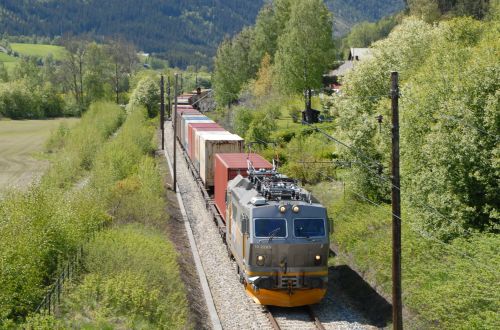The directorate says rail plays an important role in transporting freight between regions, but the industry is coming under increasing pressure from road with changes needed to ensure it remains competitive.
In the freight traffic strategy report, which will feed into the development of the 2022-2033 National Transport Plan, the directorate says longer trains and improved access to terminals are the best measures that will offer the greatest benefits in the short term.
The 371km Bergen - Hønefoss Bergen Line currently has a market share of 55%, and the directorate has proposed developing the capability for 600m-long trains by extending the passing loops along the line and expanding the capacity of the Nygårdstangen freight terminal. The Oslo - Trondheim Dovre Line, which has a market share of 53%, could also be upgraded for the operation of 600m-long trains.
Road traffic has the largest market share between Oslo and Stavanger with 58%, ahead of the Sørlandet Line, which has 37%. The directorate’s analysis shows that increasing train lengths to 600m would not produce the same effect as on the other lines due to the high road standard and the demanding topographical formation of the line. Instead, the directorate has proposed allowing the operation of 450m-long trains on the line.
Rail freight has an 11% market share on the Østfold Line between Oslo and southern Sweden compared with 85% on the road. The directorate has recommended developing the capability for 740m-long freight trains along the route and says the Ski - Sarpsborg route could also be developed for freight traffic.
The directorate says it is also important to develop the Alnabru freight terminal, which is located northeast outside of Oslo.

